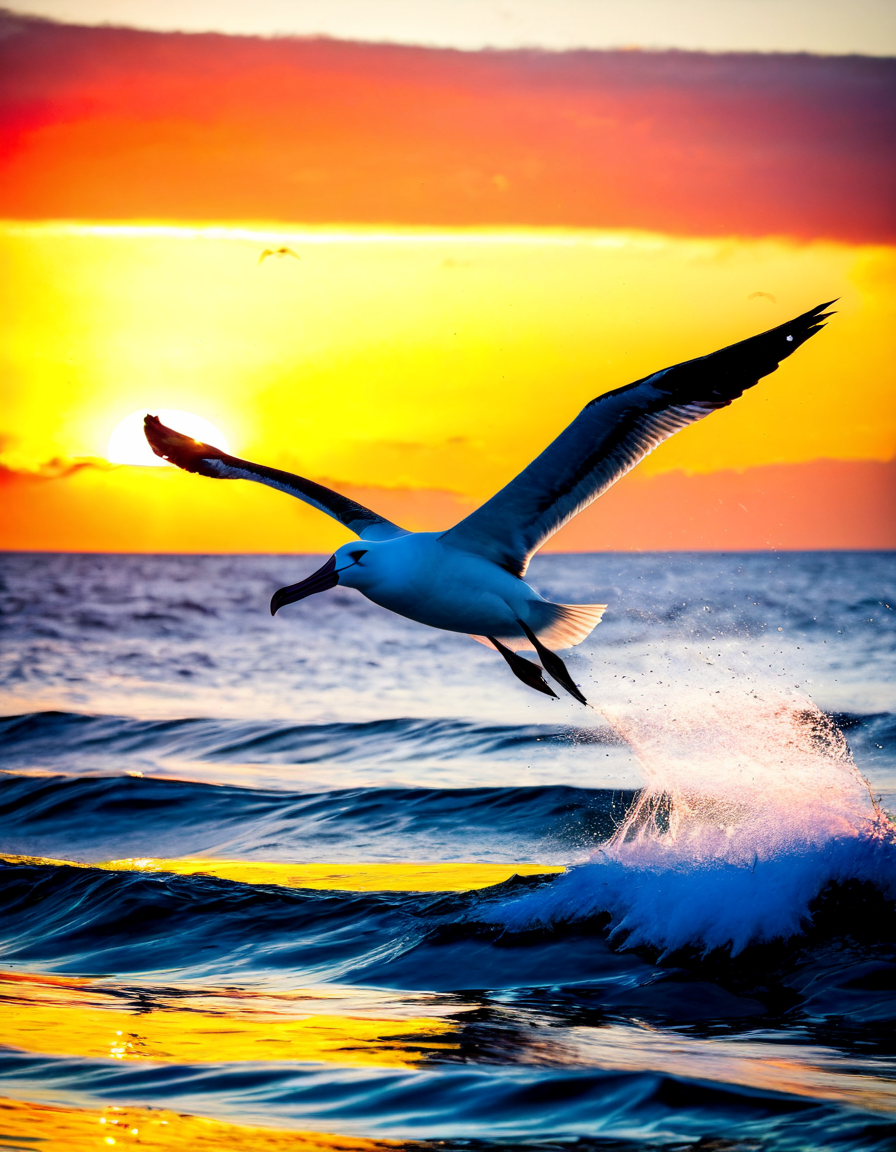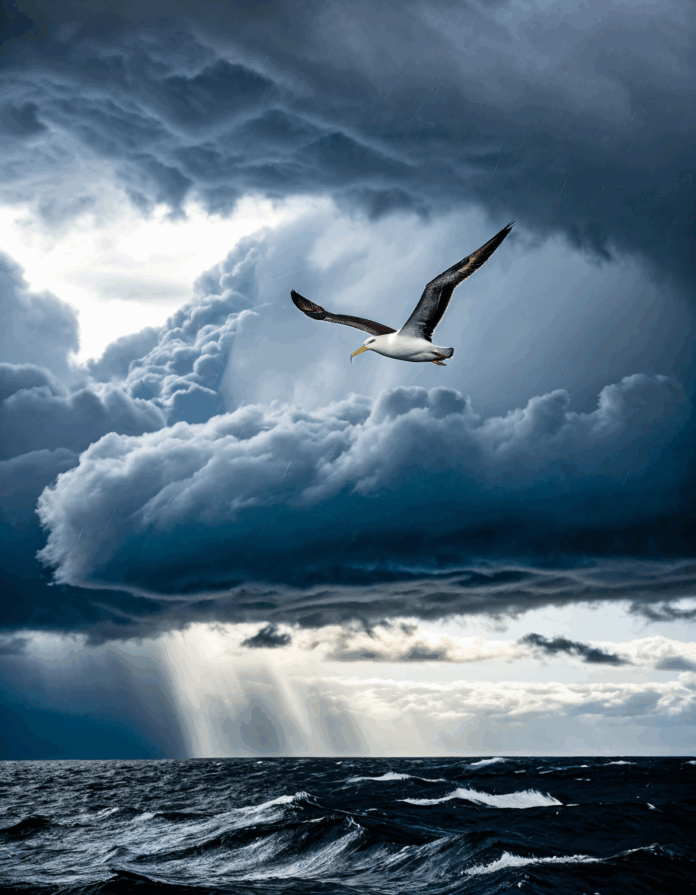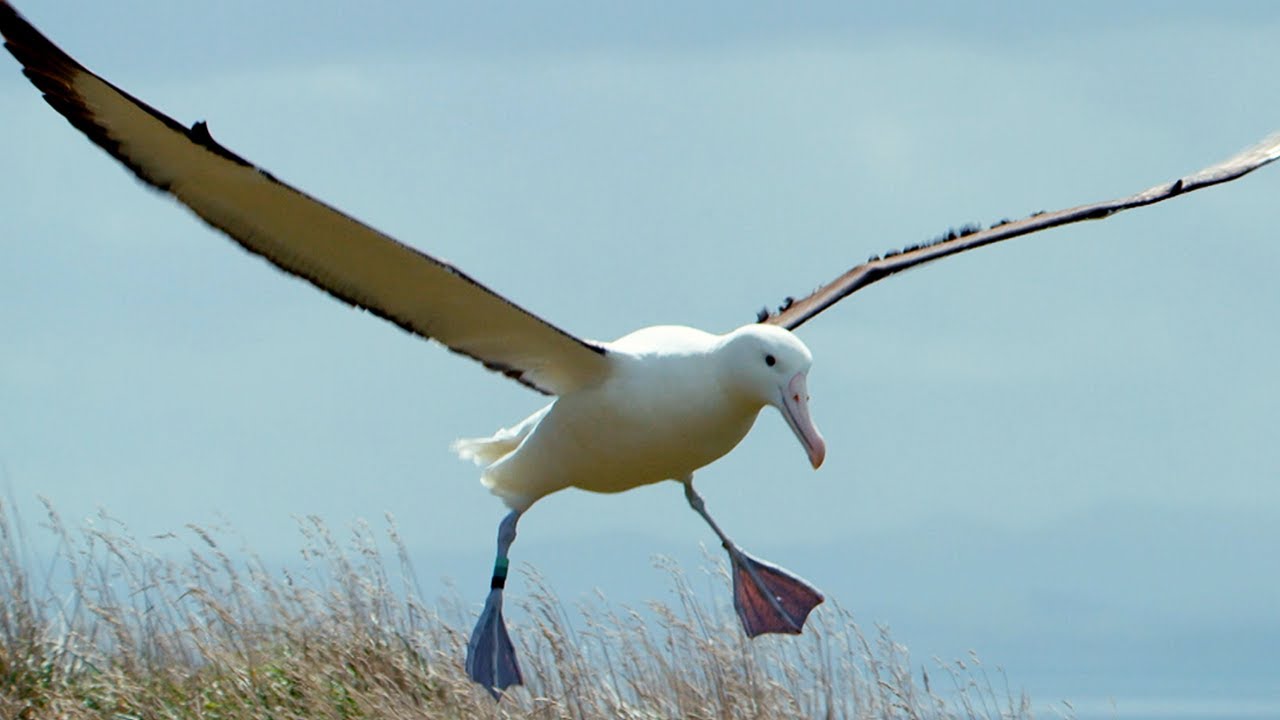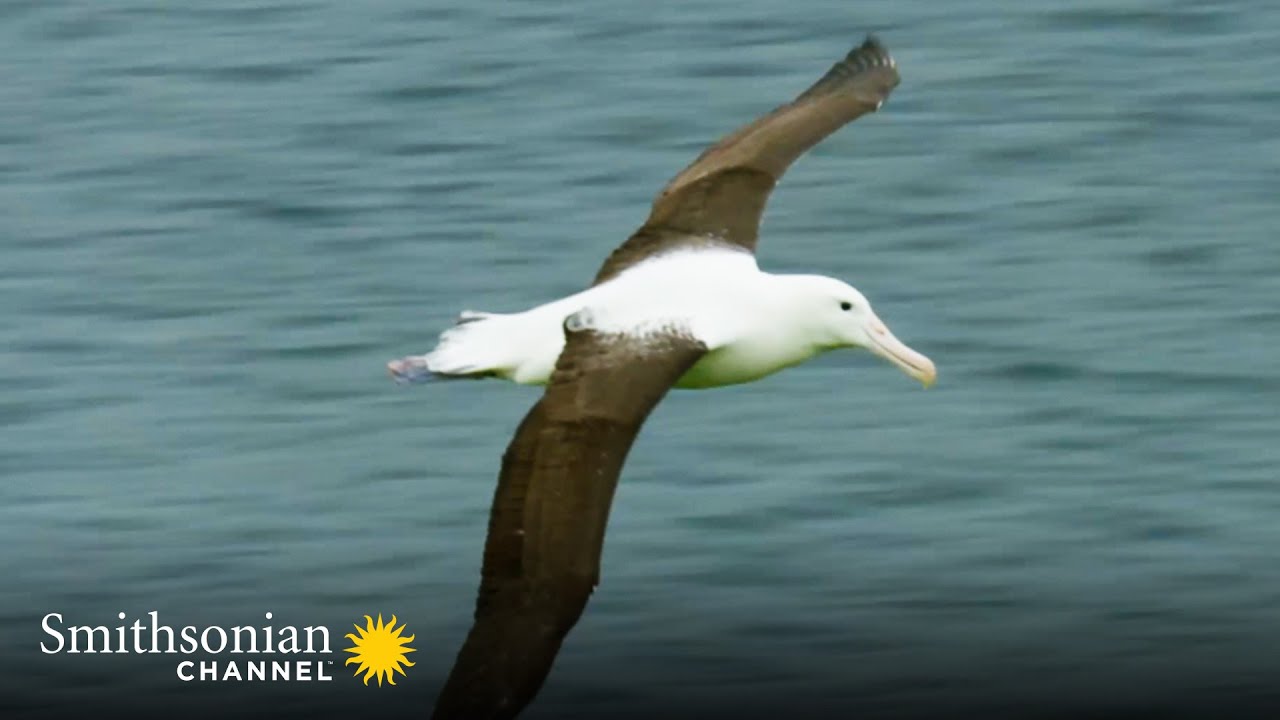1. Understanding the Albatross: A Symbol of Freedom and Longevity
The albatross isn’t just another seabird; it represents the unbridled spirit of the oceans. With wingspans exceeding 12 feet, these magnificent birds can glide across vast stretches of water with minimal effort. Thanks to their incredible anatomy, albatrosses boast a lightweight bone structure and specialized wing shapes that allow them to soar gracefully. Unlike most birds, they have the ability to glide over the currents without flapping their wings for hours, conserving their energy for long-distance flights.
Getting up close to the albatross reveals their fascinating behavior. They display remarkable skills in foraging, using their keen eyesight to spot schools of fish or squid from high above. They also engage in courtship flights characterized by elaborate aerial displays that underscore their bonding rituals. Furthermore, albatrosses are deeply tied to environmental conditions; factors like wind patterns and ocean temperatures significantly influence their flight paths. As they cruise over the waves, they symbolize both freedom and longevity, embodying the essence of life at sea.
However, the open ocean isn’t an easy environment. Albatrosses must navigate shifting weather patterns and food sources, adapting to challenges that many land-based creatures never face. Their sensitivity to environmental changes makes them crucial indicators of the health of marine ecosystems. The fate of these iconic birds is, in many ways, tied to our planet’s oceans, reminding us of the delicate balance between nature and human activity.
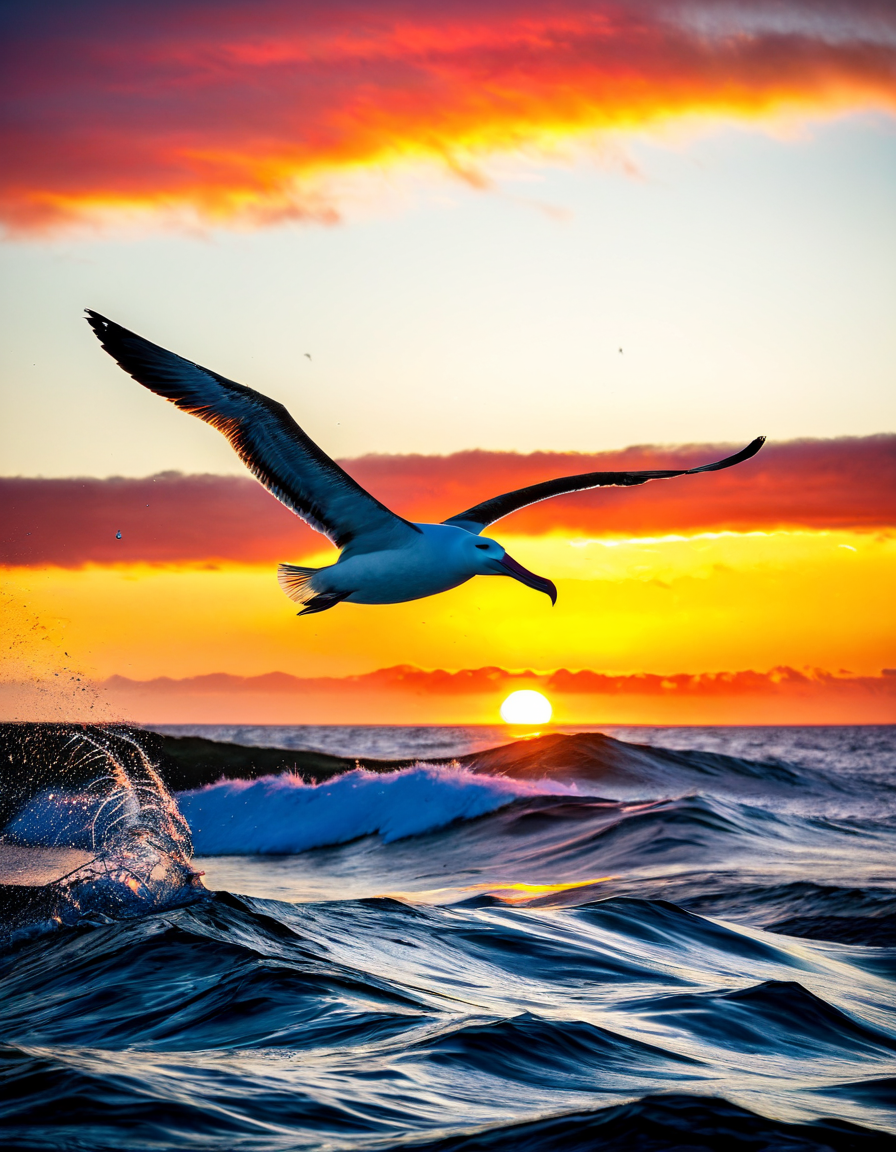
2. Top 7 Fascinating Species of Albatross
Albatrosses belong to the family Diomedeidae, which includes several intriguing species, each possessing unique traits and habitats. Here are the top seven fascinating albatross species that prove to be as varied as they are impressive:
The largest of all albatross species, with a wingspan that can reach up to 12 feet, the Wandering Albatross is renowned for its long-distance migrations. It can travel thousands of miles without flapping its wings.
Once teetering on the brink of extinction, this stunning species has rebounded significantly thanks to targeted conservation efforts. The journey of the Short-tailed Albatross highlights the power of human intervention in wildlife preservation.
Easily recognized by the prominent dark brow above its eye, the Black-browed Albatross is a vibrant representation of adaptability. Found in various marine environments across the Southern Hemisphere, it’s a testament to the resilience of seabird species.
This species stands out for its behavioral shifts as it expands its breeding ranges due to changing ocean currents. Their adaptability to the evolving marine landscape is striking and critical to their survival.
With its muted colors, the Grey-headed Albatross emits distinctive vocalizations that play a role in communication and mating. Its unique breeding habits are becoming increasingly influenced by environmental factors.
Known for its strong pair bonds, the Laysan Albatross showcases intricate social structures among seabirds. These birds exhibit fierce loyalty to their breeding grounds, often returning to the same site year after year.
Critically endangered, this species has captured attention from conservationists, drawing focus on the unique challenges specific to albatross populations as climate change reshapes their habitats.
Each of these albatross species offers a unique glimpse into the evolutionary and ecological dynamics shaping their lives. By understanding their differences, we not only appreciate the diversity within the albatross group but also recognize the urgent need for conservation efforts.
3. The Albatross: Adapting to Climate Change
As climate change casts its shadow over the oceans, albatrosses are compelled to adapt to these rapidly changing conditions. Rising sea temperatures and the shifting availability of prey are altering their feeding patterns significantly. For instance, diminishing populations of squid — a primary food source — are forcing some species to travel farther in search of nourishment, which impacts their breeding success.
Additionally, the albatross faces the challenge of navigating changing ocean currents. Alterations in these currents can affect migration routes and food availability. For example, the Wandering Albatross, once accustomed to certain feeding grounds, now finds itself in unfamiliar territory, leading to increased competition with other seabirds and a higher risk of starvation.
Conservationists emphasize the importance of understanding these shifts. Monitoring albatross populations provides valuable insights into the long-term impacts of climate change on marine ecosystems. As they become proxies for ocean health, albatrosses remind us that our actions have far-reaching effects — and that saving their species is paramount to preserving the larger marine environment.
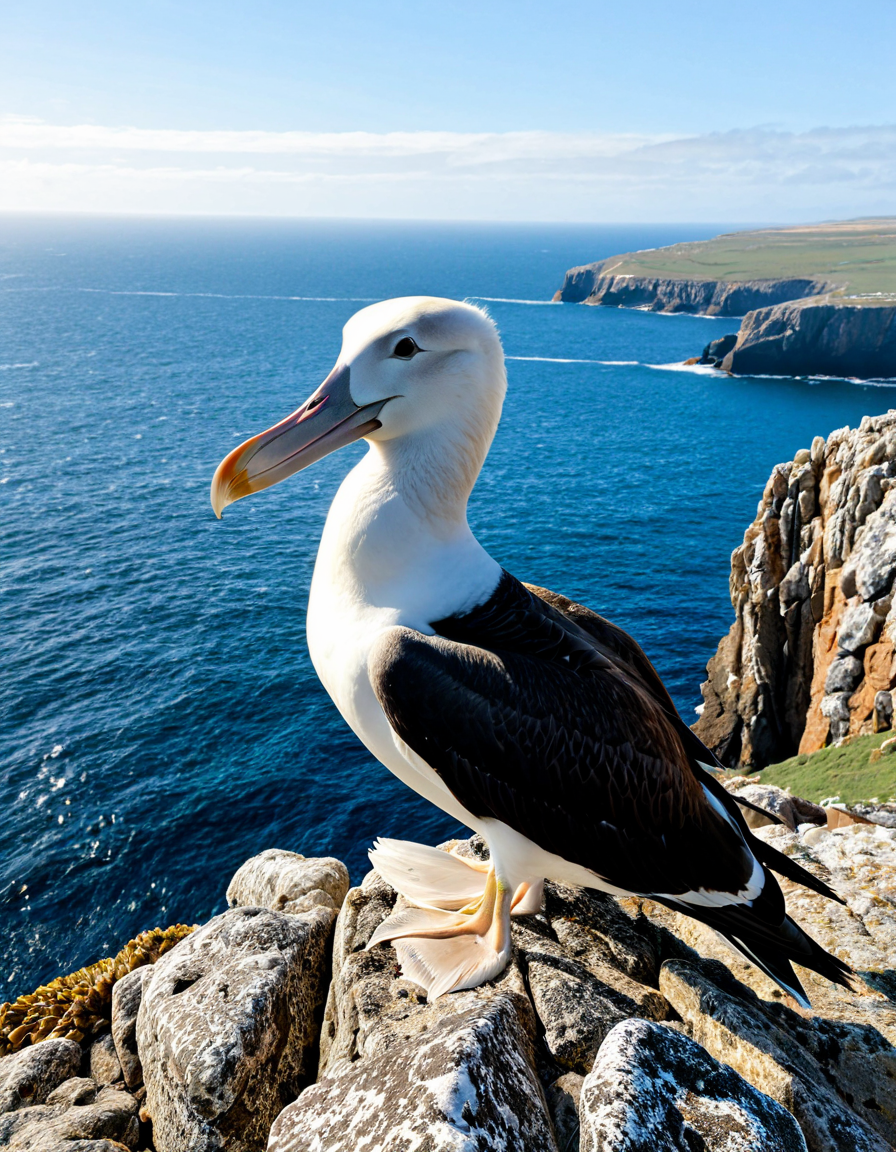
4. The Cultural Significance of the Albatross
The albatross has firmly established its presence in human culture and folklore, representing freedom, adventure, and hope. Notably, in Samuel Taylor Coleridge’s renowned poem, “The Rime of the Ancient Mariner,” the albatross becomes a powerful symbol of the maritime experience, serving as a harbinger of both good and ill fortune for sailors.
Across various Pacific islands, the albatross holds special significance. Stories of these magnificent birds are often shared, depicting them as messengers or manifestations of ancestral spirits. Their striking flights across the ocean inspire artists, writers, and poets alike, embedding the albatross deeply into the artistic fabric of cultures worldwide.
The influence of the albatross extends to contemporary works in literature and art. Modern creators are exploring the relationship between man and nature, often spotlighting the bird as a reminder of human arrogance in the face of ecological challenges. By examining the albatross through different cultural lenses, we gain insights into humanity’s enduring connection to the natural world.
5. Challenges Facing Albatross Populations Today
Despite their breathtaking grace in the skies, albatrosses face a myriad of threats. Plastic pollution stands out as a significant danger, with these seabirds often ingesting harmful materials while foraging for food. It’s disheartening to see how human activities impact their health and breeding capabilities.
Moreover, fishing practices, particularly longlining, represent a direct threat to albatross populations. Many birds become entangled or accidentally hooked, leading to declines in their numbers. This unsustainable practice raises alarms about the long-term viability of various albatross species.
Simply put, habitat loss is another major hurdle facing albatrosses. Coastal development and climate-induced changes erode the islands where these birds breed and nest. As their habitats dwindle, the survival of these magnificent birds directly correlates with our efforts to devise solutions and promote sustainable practices to safeguard their ecosystems.
6. Conservation Success Stories: Protecting the Albatross
In the face of adversity, numerous conservation initiatives showcase the strides made in protecting albatross populations. Programs like the “Friends of the Albatross” aim to raise public awareness and bolster community involvement in conservation efforts. By establishing strong networks among local stakeholders, these initiatives effectively address both education and habitat preservation.
An inspiring example of successful conservation comes from the Short-tailed Albatross. Through dedicated efforts, including protective legislation and habitat restoration, its population has seen a substantial recovery. This success story proves that, with determined action, we can turn the tide and bring species back from the brink of extinction.
Organizations such as BirdLife International have been at the forefront of conservation efforts. They implement measures to reduce bycatch in fisheries and promote sustainable fishing practices that help protect albatrosses. By gaining the support of the fishing community and promoting best practices, these programs ensure a better future not just for albatrosses but for marine life as a whole.
7. The Future of the Albatross: Vision and Action
Looking ahead, the future of an albatross arises from innovative collaboration and strategic action. Governments and conservationists must come together to form international agreements that prioritize the protection of marine ecosystems. Establishing marine protected areas will provide safe havens for albatrosses, ensuring they have the resources they need to thrive.
Implementing adaptive management practices is also critical. As climate conditions continue to evolve, monitoring and adjusting strategies will be vital in answering the needs of albatross populations. By prioritizing research on their behaviors, breeding patterns, and foraging habits, we can better understand how to mitigate the impacts of a changing environment.
In safeguarding the albatross, we ultimately protect our ocean’s health and biodiversity. The majestic presence of the albatross soaring over the waves serves as a powerful reminder of nature’s beauty. Every effort we invest in conserving their populations pays dividends, fostering not just a symbol of freedom but the ensuring survival of marine ecosystems for generations to come.
In conclusion, protecting the albatross and advocating for their survival goes hand in hand with preserving the wellness of our oceans. The flight of albatrosses speaks volumes about our responsibility to the Earth, encouraging us to embrace conservation practices that honor their legacy while safeguarding our planetary home.
In this journey, we must draw lessons from successful conservation strategies and apply them wisely. Just as we cheer for the upcoming Arsenal FC vs. Manchester United FC lineups, it’s time to rally together for a cause that truly matters: the albatross and its undeniable place in our world’s story.
Albatross: Majestic Bird Soaring Over Oceans
The Wonders of the Albatross
Did you know that the albatross is one of the world’s most impressive gliders? These birds can soar up to 10,000 feet, covering hundreds of miles without flapping their wings! They harness wind currents and can fly for days over the open ocean, which is essential for surviving in their vast marine habitat. In fact, their ability to travel great distances mirrors the wild journeys of humans during tropical storms, sometimes like those seen in Florida. Talk about a bird with a knack for adventure!
Besides their incredible flying skills, albatrosses have an interesting mating ritual. Once they find a mate, they often bond for life, and their elaborate courtship displays can take years to perfect! Much like young athletes preparing for events, such as those classic Pinewood derby car races, albatrosses invest time and effort into these relationships. They perform impressive dances, showcasing their wings and calls to impress prospective partners.
Fun Facts About Albatrosses
Albatrosses are social birds, often seen in groups while they forage for food. Their diet mainly consists of squid and fish, showcasing their preference for dining in style. Did you know they can dive up to 12 feet deep to catch their meal? It’s fascinating to think about them plunging into the ocean, similar to how kids enjoy the antics of a SpongeBob jellyfish—it’s( all about the thrill of the chase!
What’s even more remarkable is the albatross’s wingspan; some species can stretch nearly 12 feet! That’s wider than a Nissan SUV! Such wings not only make them stunning to watch but also serve a purpose by keeping them efficient over long distances. As they soar, they rely on wind patterns to navigate, much like sports teams planning their strategies for matchups, as seen in events like the Arsenal Fc Vs Manchester United fc Lineups.
Albatrosses have a special ability to locate food over vast areas, thanks to their keen eyesight, and they even have a super cool navigation system that allows them to travel long distances, reminiscent of soldiers based at Camp Pendleton who must navigate their way home from tours. So, the next time you spot an albatross soaring high, remember the layers of wonder woven into their existence!
